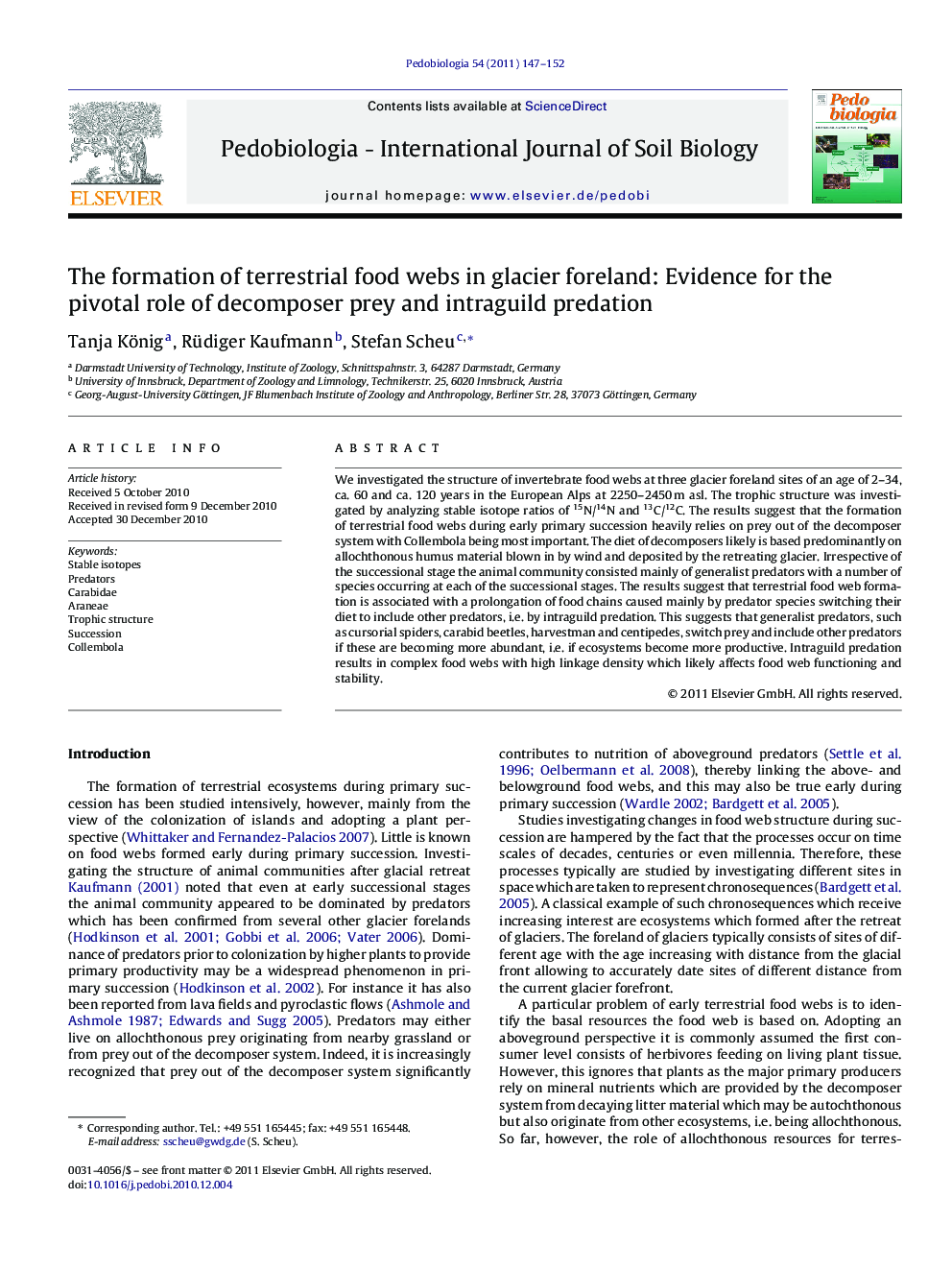| کد مقاله | کد نشریه | سال انتشار | مقاله انگلیسی | نسخه تمام متن |
|---|---|---|---|---|
| 2061489 | 1076494 | 2011 | 6 صفحه PDF | دانلود رایگان |

We investigated the structure of invertebrate food webs at three glacier foreland sites of an age of 2–34, ca. 60 and ca. 120 years in the European Alps at 2250–2450 m asl. The trophic structure was investigated by analyzing stable isotope ratios of 15N/14N and 13C/12C. The results suggest that the formation of terrestrial food webs during early primary succession heavily relies on prey out of the decomposer system with Collembola being most important. The diet of decomposers likely is based predominantly on allochthonous humus material blown in by wind and deposited by the retreating glacier. Irrespective of the successional stage the animal community consisted mainly of generalist predators with a number of species occurring at each of the successional stages. The results suggest that terrestrial food web formation is associated with a prolongation of food chains caused mainly by predator species switching their diet to include other predators, i.e. by intraguild predation. This suggests that generalist predators, such as cursorial spiders, carabid beetles, harvestman and centipedes, switch prey and include other predators if these are becoming more abundant, i.e. if ecosystems become more productive. Intraguild predation results in complex food webs with high linkage density which likely affects food web functioning and stability.
Journal: Pedobiologia - Volume 54, Issue 2, 10 March 2011, Pages 147–152